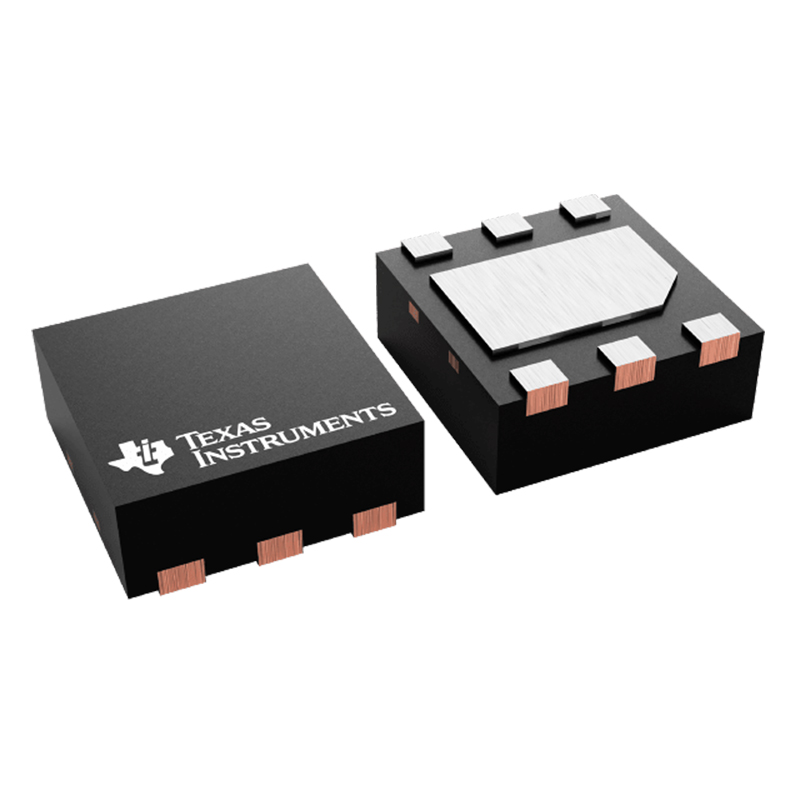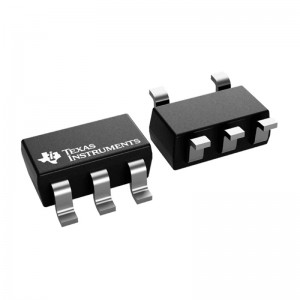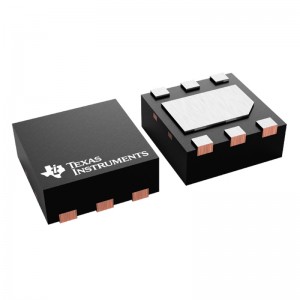
Products
TPS78101DRVR 150-mA, ultra-low-IQ
Features for the TPS781
Low IQ: 1µA
150mA, Low-Dropout Regulator with Pin-Selectable Dual Voltage Level Output
Low Dropout: 200mV at 150mA
3% Accuracy Over Load/Line/Temperature
Available in Dual-Level, Fixed Output Voltages from 1.5V to 4.2V Using Innovative Factory EPROMProgramming
Available in an Adjustable Version from 1.22V to 5.25V or a Dual-Level Output Version
VSET Pin Toggles Output Voltage Between Two Factory-Programmed Voltage Levels
Stable with a 1.0µF Ceramic Capacitor
Thermal Shutdown and Overcurrent Protection
CMOS Logic Level-Compatible Enable Pin
Available in DDC (TSOT23-5) or DRV (2mm × 2mm SON-6) Package Options
APPLICATIONS
- TI MSP430 Attach Applications
- Power Rails with Programming Mode
- Dual Voltage Levels for Power-Saving Mode
- Wireless Handsets, Smartphones, PDAs, MP3 Players, and Other Battery-Operated Handheld Products
All other trademarks are the property of their respective owners
Description for the TPS781
The TPS781 family of low-dropout (LDO) regulators offer the benefits of ultralow power (IQ = 1µA), miniaturized packaging (2×2 SON-6), and selectable dual-level output voltage levels. An adjustable version is also available, but does not have the capability to shift voltage levels.
The VSET pin allows the end user to switch between two voltage levels on-the-fly through a microprocessor-compatible input. This LDO is designed specifically for battery-powered applications where dual-level voltages are needed. With ultralow IQ (1µA), microprocessors, memory cards, and smoke detectors are ideal applications for this device.
The ultralow-power and selectable dual-level output voltages allow designers to customize power consumption for specific applications. Designers can now shift to a lower voltage level in a battery-powered design when the microprocessor is in sleep mode, further reducing overall system power consumption. The two voltage levels are preset at the factory through a unique architecture using an EPROM. The EPROM technique allows for numerous output voltage options between VSET low (1.5V to 4.2V) and VSET high (2.0V to 3.0V) in the fixed output version only. See the table in this data sheet or consult with your local factory representative for exact voltage options and ordering information; minimum order quantities may apply.
The TPS781 series are designed to be compatible with the TI MSP430 and other similar products. The enable pin is compatible with standard CMOS logic. This LDO is stable with any output capacitor greater than 1.0µF. Therefore, implementations of this device require minimal board space because of miniaturized packaging and a potentially small output capacitor. The TPS781 series IQ (1µA) also come with thermal shutdown and current limit to protect the device during fault conditions. All packages have an operating temperature range of TJ = -40°C to +125°C. For high-performance applications requiring a dual-level voltage option, consider the TPS780 series, with an IQ of 500nA and dynamic voltage scaling.
1. Who are the staff in your R & D department? What are your qualifications?
-R & D Director: formulate the company’s long-term R & D plan and grasp the direction of research and development; Guide and supervise r&d department to implement company r&d strategy and annual R&D plan; Control the progress of product development and adjust the plan; Set up excellent product research and development team, audit and training related technical personnel.
R & D Manager: make new product R & D plan and demonstrate the feasibility of the plan; Supervise and manage the progress and quality of r&d work; Research new product development and propose effective solutions according to customer requirements in different fields
R&d staff: collect and sort out key data; Computer programming; Conducting experiments, tests and analyses; Prepare materials and equipment for experiments, tests and analyses; Record measurement data, make calculations and prepare charts; Conduct statistical surveys
2. What is your product research and development idea?
- Product conception and selection product concept and evaluation product definition and project plan design and development product testing and validation launch to market








